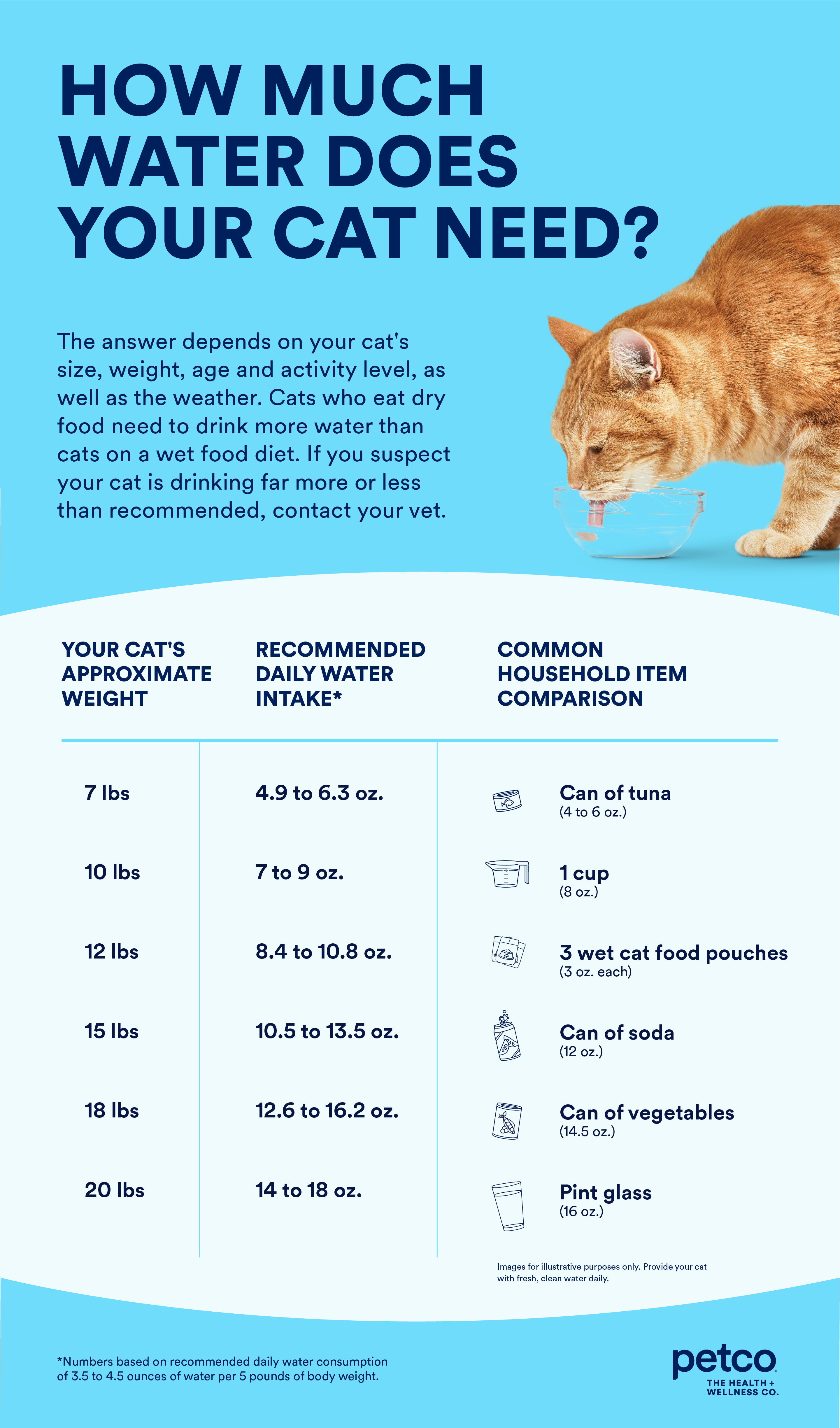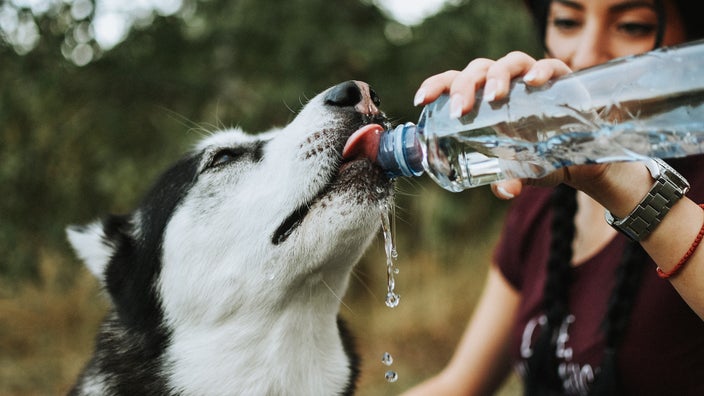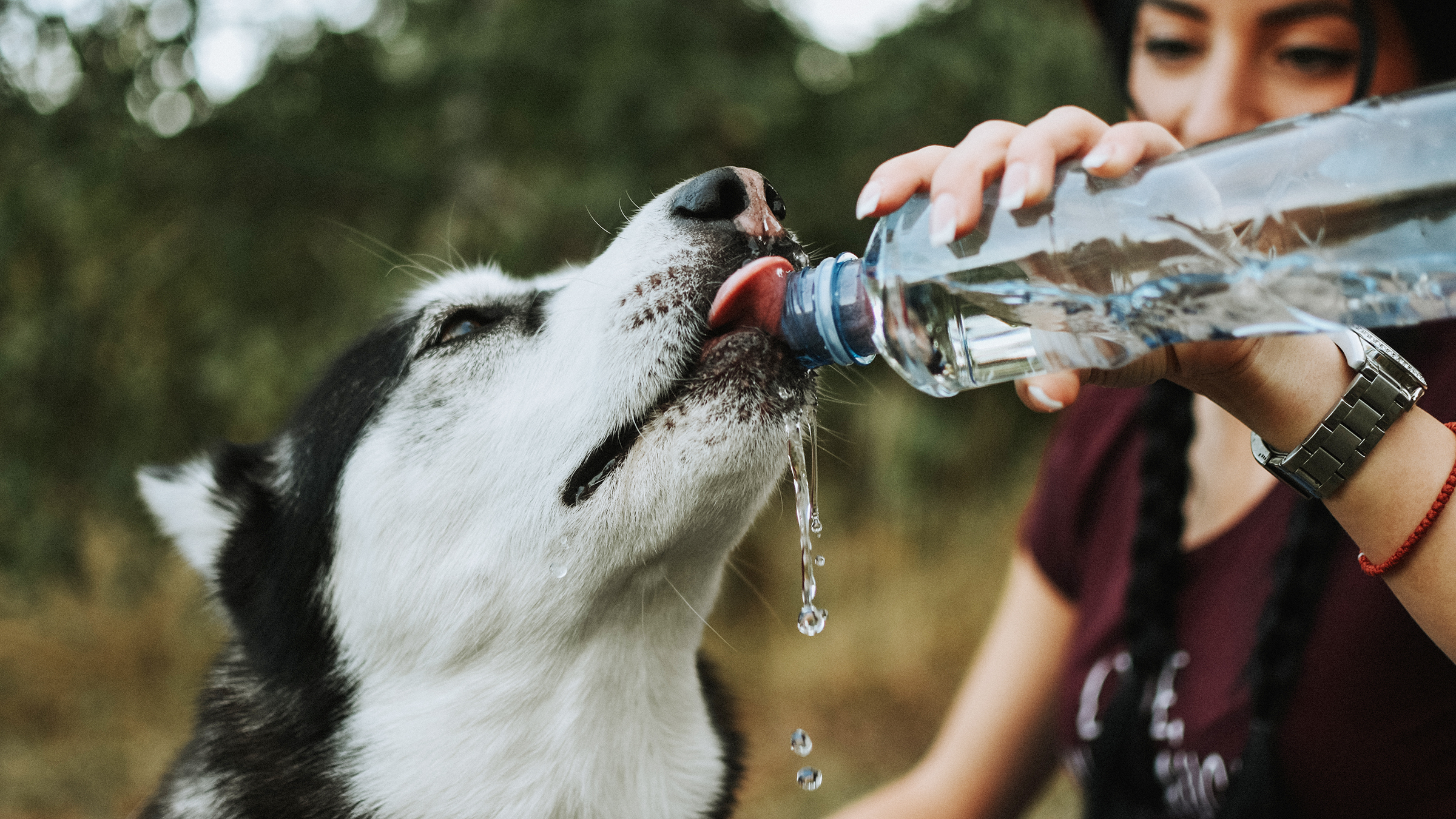To stop a dog from drinking too much water, limit their access to water and block their bowl to control their intake. Excessive water consumption in dogs can be a cause for concern.
It may indicate an underlying health issue or can lead to frequent urination and accidents in the house. Fortunately, there are effective ways to control your dog’s drinking habits. By implementing structured feeding and managing their access to water, you can prevent them from consuming excessive amounts.
Additionally, some dogs may develop a habit of drinking out of boredom. In this case, providing mental stimulation and attention can help redirect their focus and reduce their water intake. It is important to address this behavior early on to ensure the well-being of your furry companion.

Credit: www.petco.com
Understanding Excessive Water Drinking In Dogs
Excessive water drinking in dogs can be concerning, but there are ways to stop your dog from drinking too much water. By limiting access to water, adjusting feeding schedules, and providing mental stimulation, you can help regulate your dog’s water intake and prevent any potential health issues.
Causes Of Excessive Water Drinking
Excessive water drinking, also known as polydipsia, can be caused by various factors. Some common causes include:
- Dehydration
- Disease or illness such as diabetes or kidney disease
- Side effects of medication
- Poor diet or lack of nutrients
- Psychological factors such as anxiety or stress
Signs Of Excessive Water Drinking
Recognizing the signs of excessive water drinking in your dog is crucial to addressing the issue. Look out for the following signs:
- Frequent urination
- Increased thirst
- Weight loss
- Lethargy
- Changes in appetite
- Vomiting or diarrhea
Why It’s Important To Address Excessive Water Drinking
Addressing excessive water drinking in your dog is important for several reasons:
- Preventing dehydration: Excessive water intake can lead to dehydration if not properly managed. Dehydration can be harmful to your dog’s overall health and well-being.
- Identifying underlying health issues: Excessive water drinking can be a symptom of an underlying health condition. By addressing this issue, you can identify and treat any potential health problems early on.
- Improving quality of life: Excessive water drinking can cause discomfort and inconvenience for both you and your dog. By addressing this behavior, you can improve your dog’s quality of life and reduce the risk of accidents or health complications.
By understanding the causes and signs of excessive water drinking in dogs, you can take the necessary steps to address this behavior and ensure your dog’s health and well-being.

Credit: www.goodrx.com
Strategies To Limit Water Intake In Dogs
Is your dog constantly guzzling water and leaving you worried about their excessive intake? Don’t fret! Implementing certain strategies can effectively manage your dog’s water consumption. In this article, we will explore three key methods to limit water intake in dogs: Structured Feeding and Scheduled Water Access, Using Specialized Dog Bowls for Slower Drinking, and Training Techniques and Environmental Enrichment.
Structured Feeding And Scheduled Water Access
If your dog tends to gulp down water, it’s crucial to establish a structured feeding and drinking schedule. By controlling their access to water, you can prevent excessive drinking and potential health issues.
Here are a few tips to implement this strategy:
- Provide water only during specific times of the day, such as meal times and after exercise.
- Measure and monitor the amount of water your dog consumes, ensuring it falls within a healthy range.
- Establish a consistent feeding schedule that aligns with their water intake to maintain balance.
Using Specialized Dog Bowls For Slower Drinking
Specialized dog bowls are designed to slow down drinking, allowing your dog to consume water at a healthier pace. These bowls come in different styles, including puzzle bowls and slow-feed bowls, which promote slower intake and prevent gulping.
Consider the following options to help control your dog’s water consumption:
- Puzzle bowls: These bowls have various obstacles and ridges, making it challenging for your dog to drink too quickly.
- Slow-feed bowls: These bowls have specialized designs that require your dog to maneuver around obstacles or sip water from specific areas, slowing down their drinking process.
Training Techniques And Environmental Enrichment
Implementing training techniques and providing environmental enrichment can redirect your dog’s attention and reduce their excessive drinking. By addressing the root cause of their behavior, you can effectively manage their water intake.
Here are a few strategies to try:
- Offer alternative activities, such as interactive toys or food puzzles, to engage your dog and keep them mentally stimulated.
- Provide regular exercise and playtime to help alleviate boredom or anxiety, which can contribute to excessive drinking.
- Use positive reinforcement training methods to reward desired behaviors and redirect their attention away from excessive water consumption.
By implementing these strategies, you can successfully limit your dog’s water intake, ensuring their well-being and preventing potential health concerns.
When To Seek Veterinary Help
To prevent excessive water intake in dogs, it’s important to seek veterinary help. They can provide guidance on how to stop your dog from drinking too much water, which could be a sign of an underlying health issue.
Identifying Red Flags For Health Issues
If you notice that your dog is consistently drinking excessive amounts of water, it could be a sign of an underlying health issue. While some dogs naturally have a higher water intake, it’s important to be able to recognize red flags for potential problems. Look out for the following:
- Increased frequency of urination
- Changes in urine color or odor
- Weight loss
- Loss of appetite
- Lethargy or decreased activity level
- Vomiting or diarrhea
- Changes in behavior or temperament
Consulting A Veterinarian For Diagnosis
If you notice any of the aforementioned red flags, it’s important to consult a veterinarian for a proper diagnosis. A veterinarian will conduct a thorough physical examination of your dog, and may also recommend additional tests such as blood work, urinalysis, or imaging studies to determine the underlying cause of excessive thirst. It’s crucial to seek professional veterinary help to ensure your dog receives the appropriate treatment.
Treatment Options For Dogs With Excessive Thirst
The treatment options for dogs with excessive thirst depend on the underlying cause. Once a diagnosis is made, your veterinarian will discuss the available treatment options with you. Here are some common treatment approaches:
- Dietary changes: In some cases, a change in diet may be recommended to manage your dog’s excessive thirst. This may involve switching to a specialized diet or adjusting the nutrient balance in their food.
- Medication: If an underlying medical condition is causing the excessive thirst, your veterinarian may prescribe medication to manage the condition and reduce thirst.
- Lifestyle modifications: Making certain lifestyle modifications, such as regulating your dog’s water intake, implementing a structured feeding schedule, or increasing exercise, may help manage excessive thirst in some cases.
- Follow-up care: Regular follow-up appointments with your veterinarian are important to monitor your dog’s progress and make any necessary adjustments to their treatment plan.
Remember, it’s essential to consult a veterinarian for proper diagnosis and treatment of your dog’s excessive thirst. With the right veterinary care, you can help your furry friend stay healthy and hydrated.

Credit: www.goodrx.com
Frequently Asked Questions On How To Stop Dog From Drinking Too Much Water
How Do I Stop My Dog From Obsessively Drinking Water?
To stop your dog from obsessively drinking water, provide mental stimulation and attention to prevent boredom. It may take time to find activities that engage your dog’s brain and reduce water intake, but consistency is key. Ensure your dog’s excessive thirst is not due to an underlying medical condition by consulting a veterinarian.
[38 words]
What Will Cause A Dog To Drink A Lot Of Water?
Various conditions such as diabetes, Cushing’s disease, cancer, and kidney or liver disease can cause excessive thirst in dogs. Medications may also lead to increased water intake. Consulting a veterinarian is recommended to determine the underlying cause.
How Do I Train My Dog To Drink Less Water?
To train your dog to drink less water, you can limit refills throughout the day and ration the water in a bowl. Use an anti-gulping dog water bowl to slow down their drinking speed. Be consistent with the amount and timing of water provided.
How Do I Limit My Dog’s Water Intake?
To limit your dog’s water intake, you can: 1. Limit Refills: Ration the water you leave out for your dog during the day. 2. Automate It: Use an automatic water dispenser that allows you to control the amount of water.
3. Pay attention: Monitor how much water is put in the bowl and how much is left at the end of the day. 4. Refill consistently: Fill the bowl at the same time every day and in the same place.
5. Use an anti-gulping dog water bowl to slow down drinking.
Conclusion
To prevent your dog from drinking excessive amounts of water, it’s important to implement structured feeding and hydration practices. Limit their access to water throughout the day and consider blocking their bowl to offer controlled drinking intervals. Additionally, adjust their feeding schedule to regulate their thirst.
By implementing these strategies consistently, you can help your dog maintain a healthier water intake and prevent any related health issues. Remember, it may take time and patience, but with persistence, you can successfully modify your dog’s behavior.



